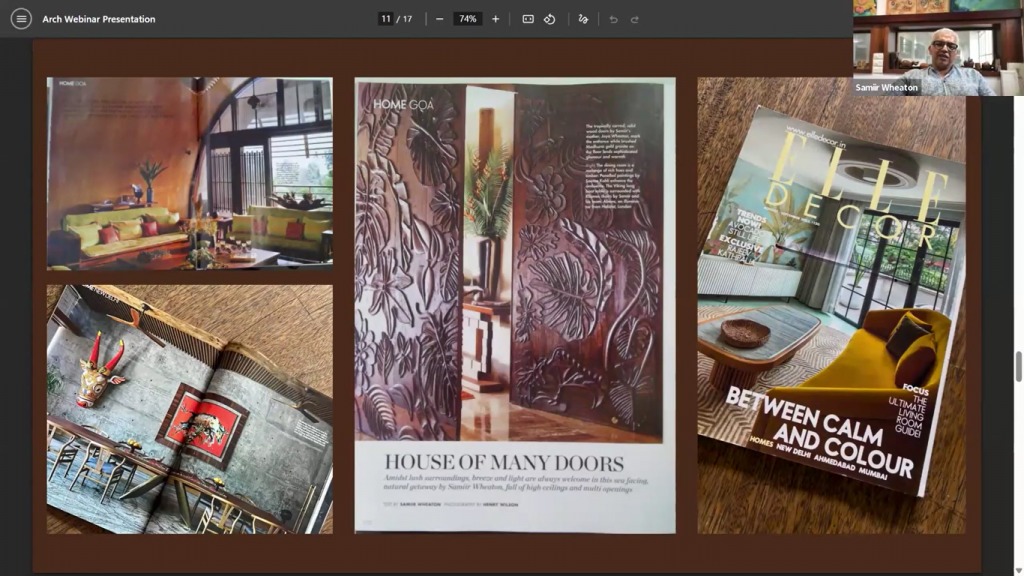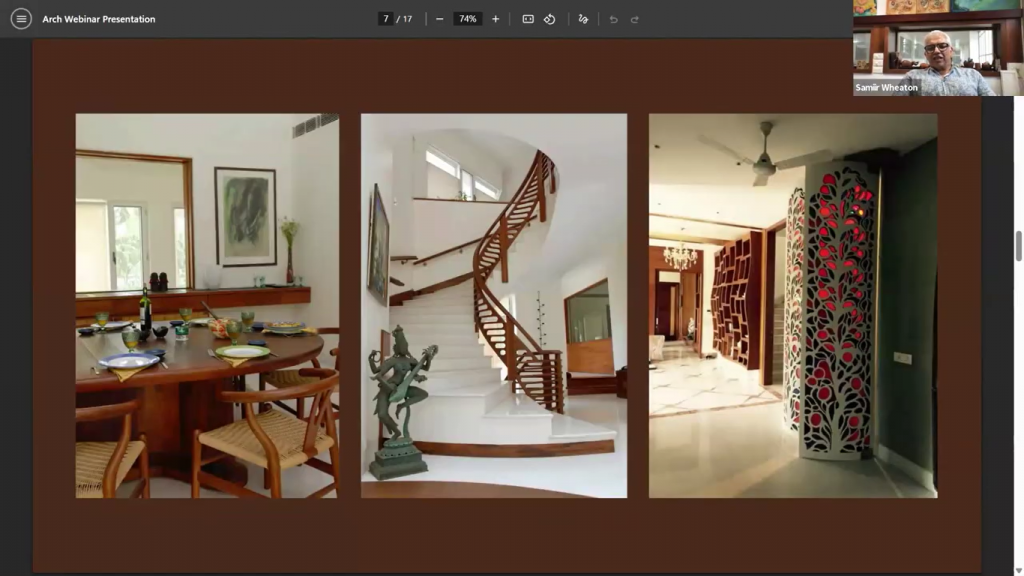Interior design is more than arranging furniture or shaping walls. It’s about understanding people, places, and their dreams, then turning that understanding into spaces that feel real and alive. In a recent session, Samiir Wheaton, a multidisciplinary designer with over 30 years of experience in architecture, interiors, and furniture design, shared how design can become a lifelong practice of learning and experimentation. Traditional craft, modern technology, sustainability, and even disciplines like endurance sports can inform how ideas are conceived and refined. Rather than a fixed formula, design becomes a way to keep growing, stay curious, and create spaces that truly connect with the people who live in them.
In this blog, we will explore how design connects with people, places, and aspirations — and how personal experiences can shape design thinking.
Building Timelessness over Trends
A good design should outlast passing styles. Instead of chasing short-term trends, create spaces and furniture meant to age gracefully rather than become obsolete. Samiir highlighted one of his home projects, which used exposed concrete, reclaimed bricks, and stainless-steel details — materials chosen for their honesty and long lifespan. Another project involved carving real leaves from a client’s garden into solid wood doors, literally “freezing” memories into the home. Such choices make projects both sustainable and emotionally resonant.

For students, this approach shows what real sustainability means. By designing for longevity, you naturally cut down on waste and resource use while creating spaces that remain relevant and meaningful for decades.
Storytelling through Materials
Materials are not just functional; they carry meaning and memory. As Samiir explained, design can turn materials into storytellers: carving patterns from a client’s garden plants into wooden doors or shaping a roof so it flows like the surrounding hills. In these ways, buildings begin to speak, holding personal stories and reflecting the character of their setting.

Every project starts with looking closely at its context, hills, trees, climate, and textures. The choice of material becomes a direct response to the place. A home in Goa needs a different approach than one in Rajasthan. Furniture in a humid region must be treated differently from furniture in a dry region. This sensitivity makes each project unique. When materials are used with care, design moves beyond function and becomes a living narrative shaped by time and place.
Adapting Design to Diverse Needs
Samiir Wheaton’s work spans private homes, hotels, nightclubs, and institutions — each needing its own approach. A house often asks for warmth and comfort, while a nightclub might need drama and boldness. In one case, even a small exercise in designing cutlery grew into a full architectural project, showing how ideas can expand when the process is flexible.

For designers, the lesson is clear: stretch across different fields and stay adaptable. Listening closely to clients and understanding what they want to express is key. Every space, whether residential or hospitality, projects a certain image. The designer’s role is to bring that image to life in built form.
Building with Many Hands
Flexibility is central to design. The field is always changing, and balancing its many interconnected parts is only possible through collaboration. Skilled craftspeople, emerging designers, and clients all contribute perspectives that help transform isolated ideas into complete environments.
Teamwork in design is much like support systems in other areas of life. Samiir showed how even pursuits that appear individual — such as swimming or long-distance running — rely on training partners, mentors, or encouragement from others. In a studio, the same principle applies: designers, artisans, and staff achieve the best results when working as one team. Patience, humility, and the ability to build strong collaborations form the foundation of meaningful creative work.
Design Shaped by Living
One of the most compelling parts of the session was the connection between sports and design thinking. Samiir described how swimming every day became his way to replay a project in the mind like a film, often leading to new ideas. Completing challenges such as the Ironman, swimming across the English Channel or the Bhagirathi River, and climbing Mount Elbrus in Russia was not about setting records but about resetting the mind and returning to work with fresh energy. He emphasized that qualities such as discipline, resilience, and teamwork gained through sports are linked directly to creative practice. Design grows stronger when it is fed by real experiences outside the studio.

Throughout the talk, Samiir shared guidance for students and emerging professionals. Patience and humility are just as important as talent. True success comes from steady learning and openness rather than rushing to build a personal brand. To grow as designers, step outside the studio, travel, play sports, and connect with nature to build empathy and fresh insight.
Balancing Technology and Creativity
Technology was also discussed as something to use wisely. Tools like AI can support the process, but should never replace creativity. Pinterest boards and algorithms may give references, but originality comes from personal observations, experiments, and even mistakes. As Samiir put it: “Don’t let AI rule you, use it as a tool, have fun with it, but be original.” The future of design lies in balancing technology and handcraft, and digital and tactile ways of working.
At ARCH, design education extends beyond classrooms. Students are encouraged to explore life outside the studio, engage with communities, experiment boldly, and learn from real-world experiences. Faculty, peers, and industry mentors work together to create an environment where patience, humility, and creativity are fostered alongside technical skills.
For aspiring designers, ARCH offers a space to grow as thinkers, collaborators, and storytellers. The goal is to prepare graduates who are not only ready for professional challenges but who also carry the confidence to shape meaningful, original work in the world of design.
